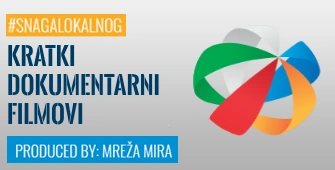Are you a high school student, a student or are you simply interested in writing project proposals? Many times, you have heard that someone has written a great project that is being implemented, and you have no idea how? Do you have a great idea and don’t know what to do with it? Don’t see the connection between project proposals and marketing? If you find yourself in any of the above-mentioned questions, this article is a great start to get acquainted with this very important topic.
Project proposal is not the same as project implementation
(It’s not a shame not to know, but pretending to know)
I’ll tell you the story of the biggest failure in the history of writing project proposals. When I was a high school student, professors suggested we write a “project” that would deal with working with children, inclusion, erasing borders, etc. The “project” was to be presented on a 1 × 1 meter diameter poster. Together with classmates, I toured elementary schools and kindergartens where we volunteered, photographed our work with the children and presented it on that poster we sent. Although our professors were delighted with what was realized, our volunteering had nothing to do with the call for project proposals that arrived at the school.
So, the first step in writing a project proposal is to have an idea that you want to realize. The second step is to figure out how.
The content of the project proposal should include the process by which the project implementation would be realized, but not the results of the project. It is implemented after the project proposal is accepted, i.e., it receives approval for implementation with the appropriate financial support that you have requested. Although I know that this sounds silly to many of you, the fact that our professors did not see the mistake not so long ago in 2014, speaks of how someone needs this advice, but it is also an important lesson in the field of communication. It’s not a shame not to know something, but pretending to know.
Define the area in which your idea fits
Your project can be implemented in the following areas:
- Innovation (you have an idea to develop an innovation, but you do not have the funds, which could eventually change the world)
- Scientific – research (you want to explore how a phenomenon in nature or society leads to certain changes, if you are right and this can change the world),
- Culture (perhaps you want to organize a cultural event, which would ultimately change the collective consciousness, spiritualize the local population, preserve a positive state of mind)
- Activism (someone has already defined the problem, the problem is obvious, you have a solution, but you need someone to support you)
- Or entrepreneurship
Once you define the area in which the idea fits, it will be much easier to communicate with organizations and foundations that could support your project.
Define a budget
Be sure to calculate how much your project would cost. There is no point in applying to a large fund, if you only need to provide lunch for local volunteers and a garbage truck to clean the riverbed. Also, if the project will cost a lot, it is wrong to ask for microgrants (unless you are looking for someone who will only co-finance part of the needs of your project, in that case, go ahead).
Finding the ideal foundation
In the world of funds and grants, there simply has to be an ideal foundation to support your idea. It just needs to be found. If you are a member of a student council, student organization or an NGO, there are many foundations available that will support you very easily. If you are an individual, i.e., you are not a member of any organization, there are still a number of foundations that would support your project. Do not apply to projects intended for organizations, if you do not represent the same. If you really insist, here’s a reason to start it yourself.
When searching for foundations, the easiest step is to start with state or regional funds for your goals. However, you should not limit yourself to only these funds. Be a visionary and believe in yourself. Apply to international funds that support similar ideas, if they have stated that they receive applications from all over the world or if they have not defined ineligible applicants.
It is important to emphasize that the (Letter of Intent LoI) is not the same as the project proposal. Very often, at the beginning of communication, foundations only ask for LoI, which is written on several pages, which is much easier. If the foundation that first seeks LoI seriously decides to work with you, then it will ask for other detailed information as well. In most cases, the call for applications is open all year round, but once (or a couple of times a year) it is decided which applicants to support.
What does all this have to do with marketing?
You sell your own idea in the idea market. You have to sincerely believe that your idea can change the world and that it is worthy of someone’s attention. If you approach the problem without enthusiasm, the one who reads your application will feel it. You have to master the matter you want to deal with, and you have to believe that it is you who are worthy to put that same idea into action. Therefore, marketing presentation should be your guiding thought throughout the application process.
In the end, to avoid confusion, writing project proposals is not only necessary for altruistic enthusiasts who want to change the world. It is also necessary in entrepreneurship. All serious companies are writing proposals for business projects that will be realized. Today, tomorrow, you will have to sell your idea in the same way to your boss and prove why your idea was better than the idea of one of your colleagues. Therefore, it is necessary to practice this business communication and approach the challenges when writing project proposals.
Watch a fantastic video on project planning for beginners.





